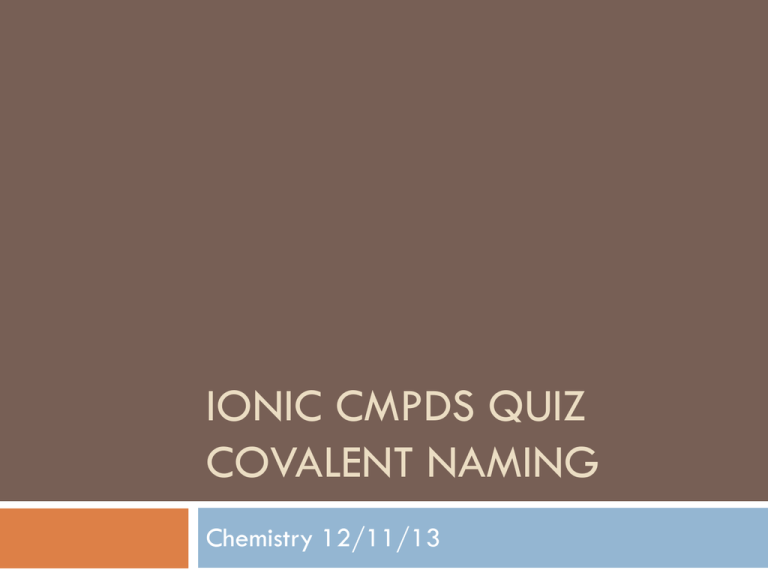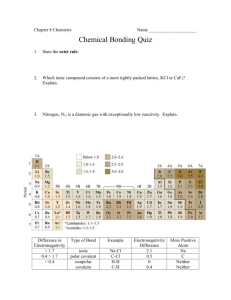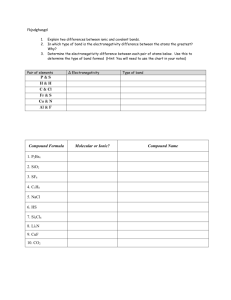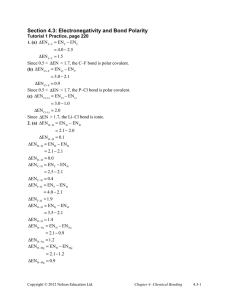Ionic Cmpds Quiz Covalent Naming
advertisement

IONIC CMPDS QUIZ COVALENT NAMING Chemistry 12/11/13 Drill Create a formula, name, and Lewis structure for the compound formed by Ba and N HW: back of pg. 7, Chemical Bonding Objectives IWBAT Name, write the formula for, and create Lewis structures for ionic compounds Name covalent compounds Explain how ionic and covalent compounds are similar and different Agenda Quiz #8 – Ionic Naming, Lewis structure, Formula HW Review – pg. 11, 15 Notes on Electronegativity Difference – how to tell if I, PC, NPC Quiz #8 You need Pencil or Pen Clean Periodic Table & Pink Ion sheet 10 points, 10 minutes HW Review pg. 11 Electronegativity and Type of Bond Electronegativity: Measures the attraction of an atom for electrons in the covalent bond. How do you know if you have Ionic or Covalent Bonds? Step 1: Subtract the electronegativities of the two atoms in the compound. ΔEN is the difference in electronegativity. Calculating Bond Type using EN Step 2: If the difference is smaller than 0.5 then the bond is nonpolar covalent. If the difference is between 0.6 and 1.9, the bond is polar covalent. If the difference is 2.0 or larger then the bond is ionic. What type of bond is… H2 – 2 identical nonmetals – should be? CO2 – 2 nonmetals – should be? ΔEN = 3.5 – 2.6 = 0.9 Carbon dioxide is polar covalent. AsF3 – A metalloid and a nonmetal – should be? ΔEN = 2.2 – 2.2 = 0 Hydrogen is nonpolar covalent. ΔEN = 4.0 – 2.0 = 2.0 Arsenic (III) fluoride is ionic. NaCl – A metal and nonmetal – should be? ΔEN = 3.2 – 0.9 = 2.3 Sodium chloride is ionic. Practice pg. 9 Back of page, #9-14 – practice Electronegativity differences








